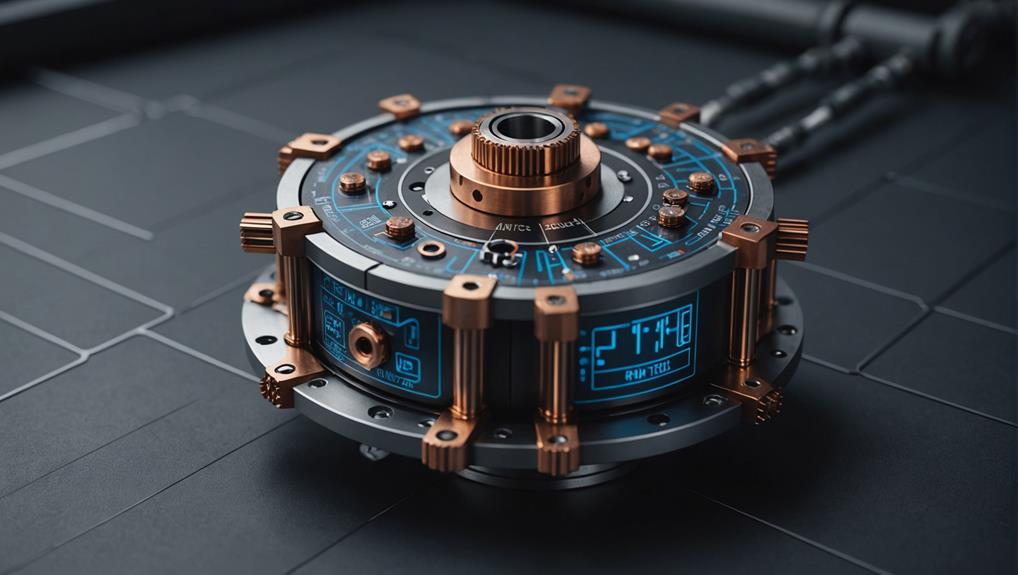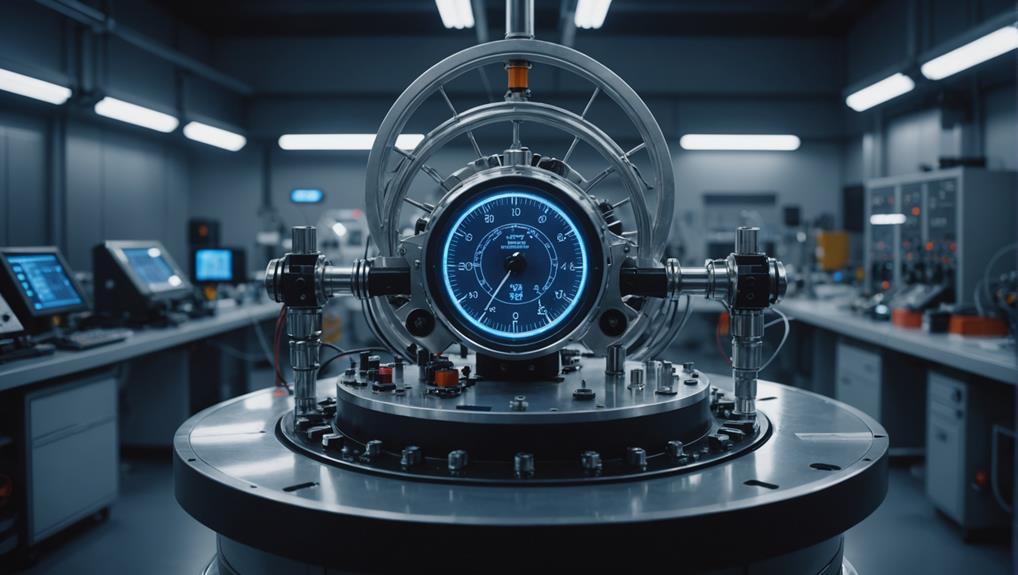
How Dynamometers Enhance Engine Diagnostics and Testing
Necessitating precise measurements, dynamometers unlock the secrets of engine performance, but what else can they reveal about engine diagnostics and testing?
Rear-wheel drive vehicles with manual transmissions, particularly those that are lightweight and high-performance, are optimally suited for testing on inertia dynamometers.
This is due to their ability to maintain consistent wheel speed and minimise wheel slippage. Sports cars, roadsters, and high-performance vehicles with turbochargers or superchargers also benefit from inertia dyno testing, which accurately measures power output during rapid acceleration.
These vehicles' exceptional power and agility make them a natural fit for inertia dynamometer testing, providing valuable insights for optimisation and improvement.
As we examine the world of inertia dynos further, the subtleties of vehicle testing and optimisation come into sharp focus.
In regards to ideal vehicle types for inertia dyno testing, certain characteristics can make a significant difference in the accuracy and reliability of the results.
Rear-wheel drive vehicles with manual transmissions are well-suited for inertia dyno testing, as they maintain consistent wheel speed and minimise wheel slippage, resulting in accurate measurements of power output and torque.
Lighter vehicles, such as sports cars or roadsters, are also ideal for inertia dyno testing, as they accelerate quickly and maintain traction on the dyno's rollers, providing a more accurate representation of their performance capabilities.
High-performance vehicles, such as those with turbochargers or superchargers, can benefit from inertia dyno testing, as it accurately measures their power output during rapid acceleration.
In general, vehicles that maintain consistent wheel speed and acceleration rate are ideal for inertia dyno testing, allowing for precise measurements of power output and torque.
High-performance vehicles, including those with rear-wheel drive configurations, are well-suited for inertia testing due to their high power output and rapid acceleration capabilities.
Inertia dynamometers can accurately measure the performance of these vehicles, providing valuable insights for optimization and improvement.
Sports cars and muscle cars, renowned for their exceptional power and agility, are a natural fit for inertia dynamometer testing.
High-performance vehicles, with their high power-to-weight ratio, can quickly accelerate to high speeds, making them ideal for inertia dyno testing. This type of testing accurately measures the rapid acceleration and high power output of performance cars, providing detailed data on horsepower, torque, and acceleration rates.
Inertia dynos, such as the Dynapack hydraulic dyno and eddy current dyno, can measure power output up to 1,500 horsepower and acceleration rates of 0-60 mph in under 3 seconds.
Chassis dynos, equipped with sophisticated control software, provide precise measurements. Inertia testing is particularly useful for performance cars with advanced drivetrain technologies, such as all-wheel drive systems, launch control, and traction control, which can be difficult to accurately measure on other types of dynos.
Specialised testing procedures and safety protocols are often required for high-performance vehicles on inertia dynos, including the use of safety harnesses, fire suppression systems, and advanced cooling systems to prevent overheating.
Rear-wheel drive cars, particularly those with manual transmissions, perform exceptionally well in inertia dynamometer testing environments.
The accuracy of inertia dynos in measuring power output makes them an ideal choice for high-performance rear-wheel drive vehicles. With manual transmissions, inertia testing allows for precise measurement of power and torque without the need for complex load simulation.
The Dynojet inertia dyno, a popular choice for testing rear-wheel drive cars, can measure power output up to 1,200 horsepower and 1,000 lb-ft of torque.
Inertia testing is particularly useful for tuning and optimizing the performance of rear-wheel drive cars with aftermarket engine modifications, such as forced induction or engine swaps. Ensuring proper tyre calibration and temperature control minimises variability, and accurate results are achieved.
This precision is vital for optimising the performance of high-performance rear-wheel drive cars, making inertia dynos the go-to choice for enthusiasts and professionals alike.
High-power output vehicles, such as those with turbocharged or supercharged engines, pose unique challenges when testing on inertia dynamometers.
The primary concern is that these vehicles often require full-throttle acceleration runs, which can be difficult to control and may result in inaccurate readings due to wheel spin.
In addition, the high power output of these vehicles can make small, incremental changes in power output difficult to measure accurately on inertia dynos.
When pushing the limits of performance, high-output vehicles require specialized testing equipment to certify accurate and reliable data.
Inertia dynamometers, designed for lower-power vehicles, are often unsuitable for high-power vehicles exceeding 1000 horsepower. The load capacity of an inertia dyno usually reaches its maximum around 800-900 horsepower, making it less than ideal for high-power vehicles that demand more sturdy testing equipment.
High-power vehicles necessitate load-bearing dynos capable of handling higher power outputs, providing more accurate results.
Inertia dynos struggle to accurately measure power output in high-power vehicles due to limitations in the load cell and data acquisition system. Furthermore, high-power vehicles require additional safety precautions and specialized testing procedures to guarantee safe and accurate testing, which may not be feasible on an inertia dynamometer.
As the demand for precision and power continues to escalate, full-throttle acceleration runs have emerged as a crucial testing methodology for high-power output vehicles on inertia dynos.
This testing approach is particularly well-suited for drag cars, muscle cars, and high-performance sports cars, which operate at maximum power for short periods. Inertia dynos can accurately measure the peak horsepower and torque output of these vehicles, which is fundamental for optimisation and fine-tuning of engine performance.
The weight distribution and tyre selection of high-power output vehicles can affect the accuracy of inertia dyno testing.
Heavier vehicles with stickier tyres tend to provide more accurate results. Inertia dynos can perform multiple runs in quick succession, allowing rapid fine-tuning of engine calibration and optimisation of engine performance. This is particularly beneficial for high-performance vehicles that produce over 500 horsepower, which require rapid acceleration and deceleration testing to verify optimal performance.
Engineers and technicians can reveal the full potential of high-power output vehicles through full-throttle acceleration runs on an inertia dyno.
Racing vehicles, where every fraction of a moment counts, rely on precise measurements to gain a competitive edge. Inertia dynamometers are well-suited for these high-performance vehicles, providing accurate measurements of rapid acceleration and high horsepower output.
Drag racing vehicles, requiring precise measurements of rapid acceleration and high horsepower output, benefit greatly from inertia dyno testing.
Circle track cars, demanding high-speed and high-torque measurements, can also utilise inertia dynos for optimisation. Motorcycles, prioritising quick acceleration and agility, can harness inertia dyno data to fine-tune their engine tuning and vehicle setup.
Quarter-mile dragsters, built for rapid acceleration, can rely on inertia dynos to measure their performance and make data-driven improvements.
Inertia dynos, such as the Dynojet, can measure horsepower up to 1,500 HP and speed up to 200 mph, making them an ideal choice for racing teams.
The precise data provided by inertia dynos enables teams to optimise engine tuning and vehicle setup, ultimately leading to improved performance on the track. Racing teams can gain a competitive edge and stay ahead of the competition through the utilisation of an inertia dyno.
Measuring the performance of muscle cars, with their formidable engines and powerful torque outputs, requires a testing solution that accurately captures their capabilities.
Inertia dynamometers are well-suited for this task, as they measure horsepower and torque during full-throttle acceleration runs. Muscle cars, such as the Ford Mustang and Chevrolet Camaro, typically have high torque outputs, which inertia dynos accurately measure.
Inertia dynos are ideal for testing muscle cars with manual transmissions, accurately capturing the power and torque output during acceleration.
Many inertia dyno systems, such as the Dynojet, have been specifically designed to test high-performance vehicles like muscle cars. These systems provide accurate and repeatable results, allowing tuners and enthusiasts to fine-tune their vehicles for maximum performance.
Muscle car owners can tap the full potential of their vehicles, achieving optimal horsepower and torque outputs, with precise and reliable data. With this data, muscle car enthusiasts can take their vehicles to the next level, solidifying their place in the world of high-performance motoring.
Tuners of high-performance drag cars rely on precise data to optimise their vehicles' power output, and inertia dynamometers deliver the accurate measurements necessary for this fine-tuning.
Inertia dynos are ideal for tuning drag cars because they can accurately measure the power output of high-performance engines in a short period, simulating the intense, quarter-mile drag racing conditions.
Accurate power measurement is a key benefit of using inertia dynos for tuning drag cars.
They can quickly measure the power output of a drag car's engine, allowing tuners to make adjustments and retune the engine for optimal performance.
Inertia dynos are well-suited for tuning drag cars because they can handle the high-torque, low-rpm conditions that are typical of drag racing engines.
They can also accommodate short, high-intensity dyno runs that simulate quarter-mile drag racing.
Another advantage of inertia dynos is that they do not require load-bearing or eddy current dynos to accurately measure the power output of drag cars.
This is particularly useful for lightweight drag cars with high-power engines.
As the demand for high-performance vehicles continues to grow, inertia dynamometers must be capable of accommodating a diverse range of vehicles, from sports cars to heavy-duty equipment.
Hyper Power's inertia dynamometer stands out for its versatility in handling vehicles, making it an ideal choice for testing a wide range of applications.
The dyno's advanced technology and sophisticated software enable accurate measurement of power and torque across multiple engine types, including naturally aspirated, turbocharged, and supercharged engines.
This makes it particularly well-suited for testing high-performance vehicles, such as those with advanced all-wheel-drive systems, as it can simulate real-world driving conditions and provide precise measurements of power and torque.
The large, 48-inch diameter drum and high-traction surface enable the dyno to handle high-torque vehicles, such as diesel trucks and heavy-duty equipment, without slipping or losing traction.
Furthermore, the dyno is ideal for testing vehicles with advanced transmission systems, including automatic and semi-automatic transmissions, due to its ability to simulate a wide range of driving scenarios and provide detailed data on power and torque output.
Ideal Vehicle Types for Inertia Dynos
At Hyper Power, we understand that inertia dynamometers are versatile testing tools that can accommodate a wide range of vehicles. However, certain vehicle types are more suitable for inertia dyno testing due to their performance capabilities and engine characteristics.
Performance Cars and Inertia Testing
High-performance cars with powerful engines, such as Porsche, Ferrari, and Lamborghini, are ideal for inertia dyno testing. These vehicles can produce high torque and horsepower outputs, making them well-suited for dynamometer testing. If you have any questions about testing your high-performance vehicle on our inertia dyno, please contact us to discuss our Custom Dyno Solutions.
High-Power Output Vehicles on Inertia Dynos
Vehicles with high-power output, such as those with turbocharged or supercharged engines, can benefit from inertia dyno testing. These vehicles can generate immense power and torque, making inertia dynos an effective tool for measuring their performance. Our team at Hyper Power can provide Technical Support and Maintenance to ensure your testing process runs smoothly.
Racing Vehicles and Inertia Dyno Suitability
Racing vehicles, including those used in drag racing, circuit racing, and rallying, can be tested on inertia dynos. These vehicles are designed for high-performance and can benefit from the precise measurements provided by inertia dynamometers. We offer Dynamometer Testing Services to help you optimise your racing vehicle's performance.
Inertia Dyno Applications for Muscle Cars
Classic muscle cars, such as the Ford Mustang and Chevrolet Camaro, can also be tested on inertia dynos. These vehicles are known for their powerful engines and can benefit from the detailed performance data provided by inertia dynamometers. Our Software Updates and Upgrades ensure that your testing process is always up-to-date.
Tuning Drag Cars on Inertia Dynometers
Drag cars, which are designed for short, intense bursts of speed, can be fine-tuned using inertia dynos. By measuring the vehicle's power output and torque, tuners can optimise the engine for maximum performance. Our Diagnostics and Performance Analysis can help you identify areas for improvement.
Hyper Power's Versatility in Handling Vehicles
Our inertia dynamometers are capable of handling a wide range of vehicles, from high-performance sports cars to classic muscle cars and racing vehicles. Our Installation and Setup services ensure that your dyno is correctly installed and set up to meet your specific needs. We also offer Training and Certification to ensure you get the most out of your dyno.
Rental Services and Accessories and Parts
If you only need an inertia dyno for a short period, our Rental Services are available. Additionally, we offer a range of Accessories and Parts to complement your dyno.
Conclusion
Inertia dynamometers are effective testing tools for a variety of vehicle types, including performance cars, high-power output vehicles, racing vehicles, muscle cars, and drag cars. These vehicles can benefit from the precise measurements and detailed performance data provided by inertia dynamometers, allowing for optimal tuning and performance improvement. If you have any questions about our services, please contact us.

Necessitating precise measurements, dynamometers unlock the secrets of engine performance, but what else can they reveal about engine diagnostics and testing?

Navigating the complexities of torque measurement requires a deep understanding of the underlying principles and mechanisms to ensure accurate results.

Precise control and optimization of engine performance await, but only for those who unlock the secrets of dynamometer-driven data analysis.

Gaining insight into the differences between inertia and brake dynamometers is crucial for ensuring accurate testing results in various industries.

Tapping into the precise measurement capabilities of dynamometers, uncover the secrets to optimizing fuel efficiency and slashing emissions in the automotive industry.

Witness the importance of rigorous safety protocols and best practices in dynamometer testing to avoid catastrophic failures and ensure accurate results.

Harnessing the nuances of precision measurement is crucial to avoiding costly errors in dynamometer testing, but what are the key factors to consider?

Witness the transformative power of dynamometers in unlocking your vehicle’s hidden performance potential, but only if you know how to harness their precision.





